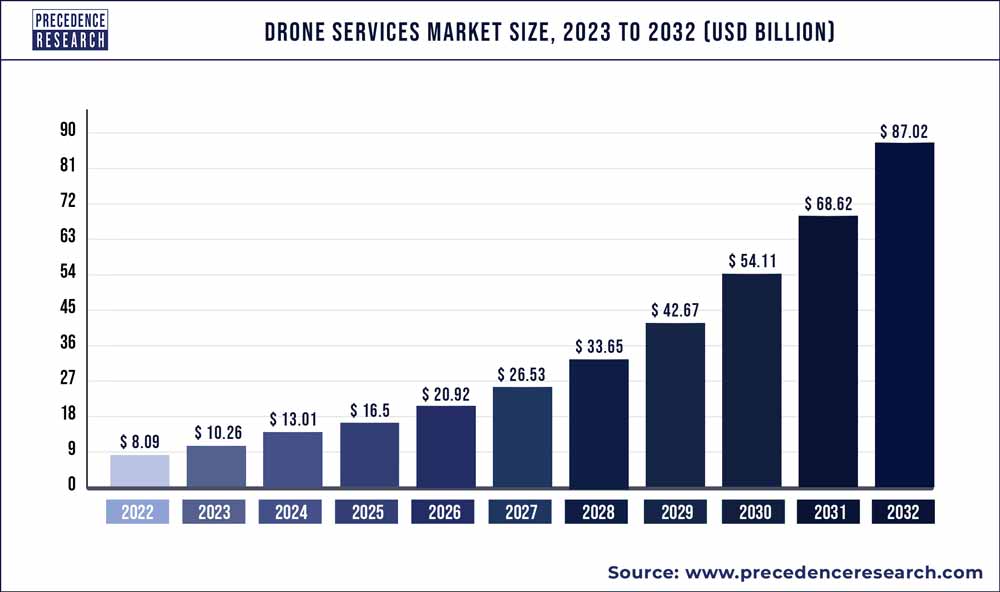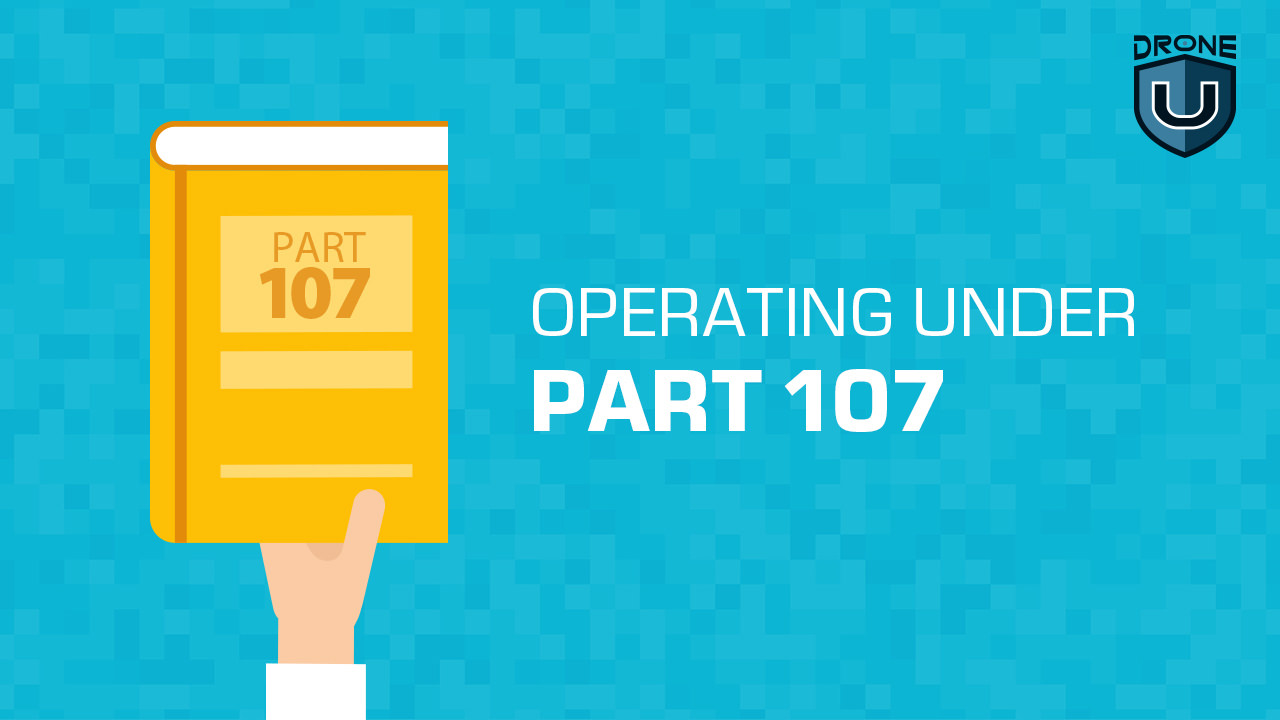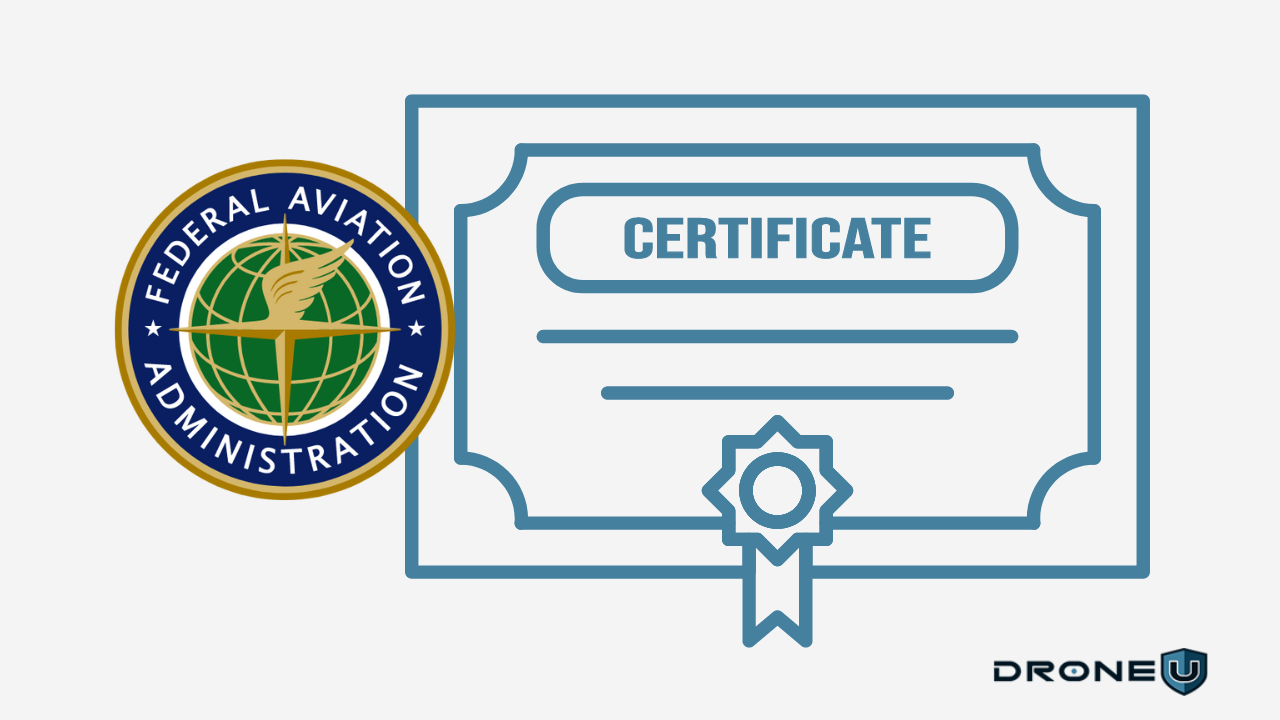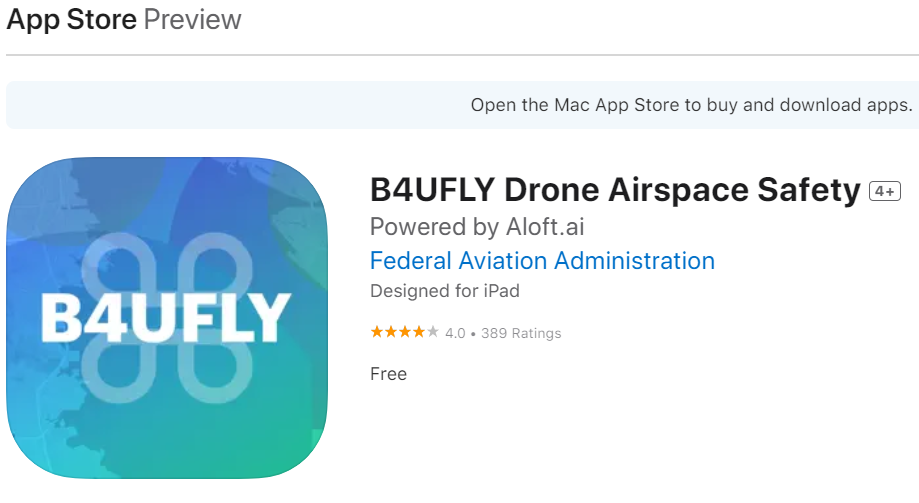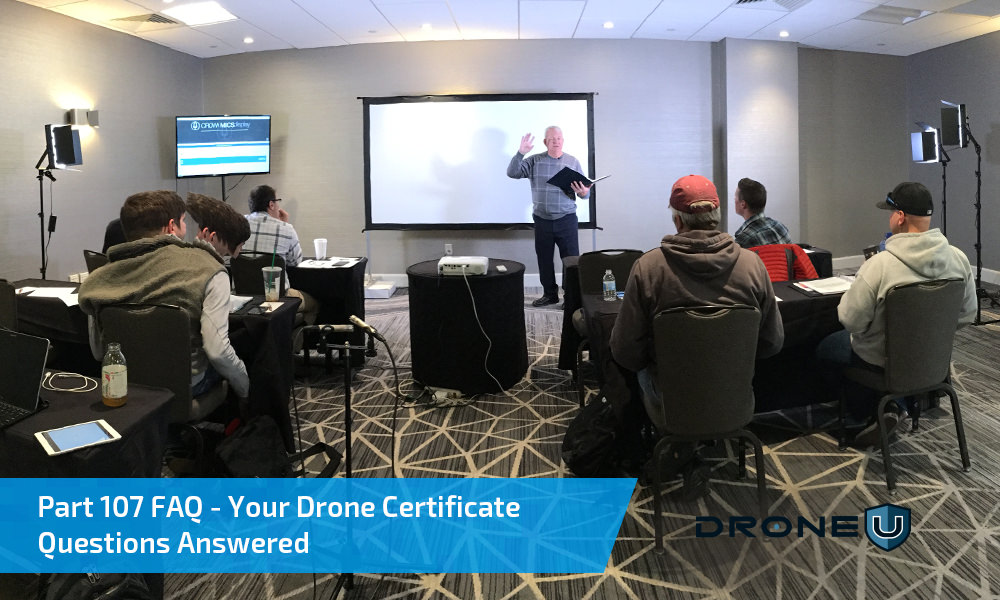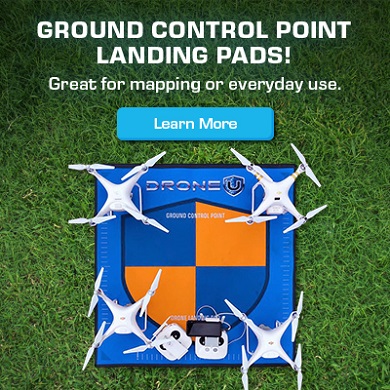









Download our free Part 107 drone certification study guide.

Thinking about launching a career as a commercial drone pilot? This guide will show you the way to get your FAA Part 107 drone license.
Drones, also known as unmanned aerial systems (UAVs), are rapidly transforming countless industries. Getting your drone pilot certification will open doors to the numerous opportunities available in the market.
While passing the Part 107 exam boasts a high success rate, preparation is key. You will need a strong grasp of safe flight procedures, drone regulations, and making decisions.
This is where drone certification comes in.
If you are serious about becoming a professional drone pilot, the Part 107 Certification opens the doors of opportunities for you.
Let’s take a quick look at the importance of Part 107 certification and what it means for you as a certified drone pilot.
Table of Contents
ToggleWhy FAA Part 107 License?
According to Precedence Research, the Drone Service Industry will be 87.02 billion dollars by 2032.
As businesses discover the incredible efficiency and cost savings drones offer, the demand for certified drone pilots is skyrocketing.
The opportunities are endless – right from mapping, surveying, and photography to videography, inspections, security, and 3D modeling just to name a few.
But drones aren’t just about cool jobs.
They are increasingly used for critical life-saving missions like search and rescue, assessing disaster damage, and identifying potential hazards.
To capitalize on these opportunities, earning your part 107 license is the ideal first step.
Let’s jump right in and learn the fundamentals of the Part 107 Drone License.
What is Drone Certification?
Drone certification, also known as a Remote Pilot Certificate or Part 107 license, is an official designation for drone pilots from the Federal Aviation Administration (FAA). You need to pass the Part 107 drone certification exam to get the license.
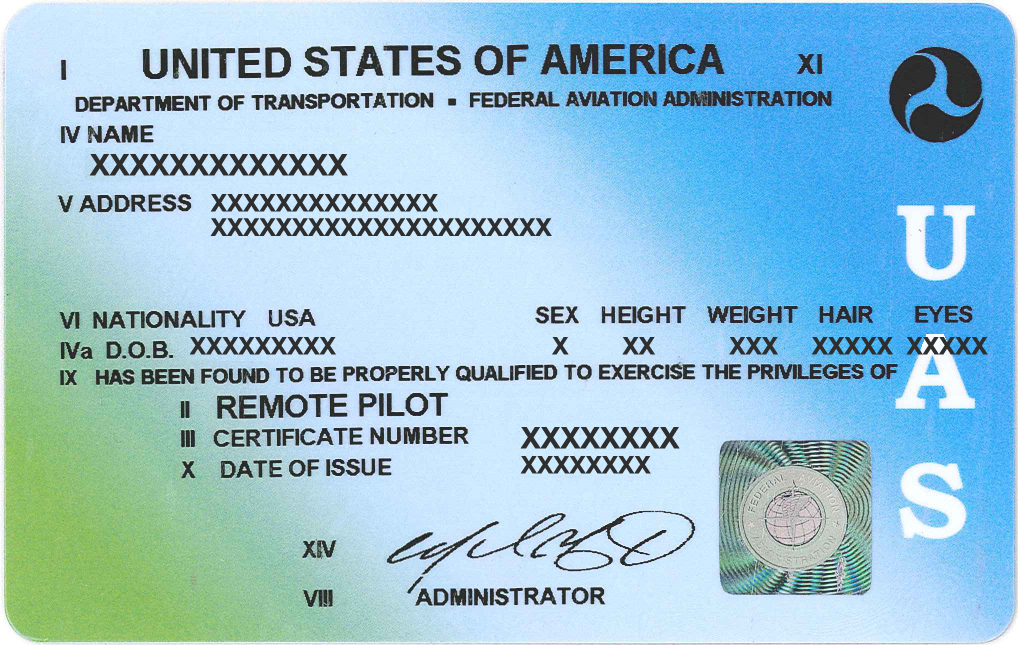
Earning this certification allows you to fly drones for commercial purposes in the United States legally.
Passing the Part 107 exam demonstrates that you have a good understanding of airspace regulations and safety protocols. This prepares you to fly safely within the acceptable use of FAA policy.
Learn what certification you need for drone mapping in this video:
Understanding Terminology: Definitions in 14 CFR Part 107
1. Control Station
An interface used by the remote pilot to control the flight path of the small unmanned aircraft.
2. Corrective Lenses
This means spectacles or contact lenses.
3. Small Unmanned Aircraft
An unmanned aircraft weight less than 55 lbs. on takeoff, including everything that is on board or otherwise attached to the aircraft.
4. Small Unmanned Aircraft System
A small unmanned aircraft and its associated elements are required for the safe and efficient operation of small unmanned aircraft in the national airspace system.
5. Unmanned Aircraft
An aircraft operated without the possibility of direct human intervention from within or on the aircraft.
6. Visual Observer
A person who is designated by the remote pilot in command to assist the remote pilot in command and the person manipulating the flight controls of the sUAS to see and avoid other air traffic or objects aloft or on the ground.
7. Person Manipulating the Controls
A person other than the remote pilot in command who is controlling the flight of an sUAS under the supervision of the remote PIC.
8. Remote Pilot in Command (RPIC)
A person who holds a remote pilot certificate with an sUAS rating and has the final authority and responsibility for the operation and safety of an sUAS operation conducted under Part 107.
Let’s uncover the steps of getting a commercial drone pilot license.
How to Get an FAA Part 107 License: Step-by-Step Guide
Here are the steps you’ll need to take to earn your drone license:
Step 1: Meet the Eligibility Criteria
Step 2: Meet the Basic Requirements
Step 3: Prepare Exam Topics and Question Types
Step 4: Follow the Application Process and Take the Test
Step 1. Eligibility Criteria for Commercial Drone Certification
To earn a commercial drone pilot license under 14 CFR Part 107, here are the eligibility criteria.
For First-Time Pilots
You must:
- Be at least 16 years old
- Be able to read, speak, write, and understand English
- Be in a physical and mental condition to safely fly a drone
- Pass the initial aeronautical knowledge exam: “Unmanned Aircraft General – Small (UAG)”
For Existing Part 61 Certificate Holders
- Must hold a pilot certificate issued under 14 CFR part 61
- Must have completed a flight review within the previous 24 months
Step 2. Basic Requirements for Drone Certification
Remote Pilot Certificate for First-Time Pilots:
- Must be easily accessible by the remote pilot during all UAS operations
- Certificate holders must complete an online recurrent training every 24 calendar months to maintain aeronautical knowledge recency
Remote Pilot Certificate for Existing Part 61 Certificate Holders:
- Must be easily accessible by the remote pilot during all UAS operations
- Certificate holders must complete an online recurrent training every 24 calendar months to maintain aeronautical knowledge recency
Step 3. Exam Topics and Question Types Related to FAA Part 107 License Exam
The Part 107 exam consists of multiple-choice questions covering the following topics:
Initial Aeronautical Knowledge Test Topic Areas – For First-Time Pilots Include:
- Applicable regulations relating to small unmanned aircraft system rating privileges, limitations, and flight operation
- Airspace classification and operating requirements, and flight restrictions affecting small unmanned aircraft operation
- Radio communication procedures
- Determining the performance of small unmanned aircraft
- Aviation weather sources and effects of weather on small unmanned aircraft performance
- Small unmanned aircraft loading and performance
- Emergency procedures
- Crew resource management
- Physiological effects of drugs and alcohol
- Aeronautical decision-making and judgment
- Airport operations
- Maintenance and preflight inspection procedures
- Operation at night
Part 107 Small UAS Initial (Alc-451) Online Training Course – For Existing Part 61 Certificate Holders Will Cover These Topic Areas:
- Emergency procedures
- Crew resource management
- Maintenance and preflight inspection procedures
- Operation at night
- Applicable regulations relating to small unmanned aircraft system rating privileges, limitations, and flight operation
- Effects of Weather on small unmanned aircraft performance
- Determining the performance of small unmanned aircraft
- Small unmanned aircraft loading and performance
Step 4. Drone Certification Application Process
Here are the steps to obtain your commercial drone pilot certificate from the Federal Aviation Administration (FAA).
A: Gather the Required Documents and Forms
Prepare the necessary documents and forms for your application. This typically includes
- Remote Pilot Certificate Application Form: This is the FAA Form 8710-13
- Proof of Identity: You must provide valid government-issued photo identification proof
- Proof of your current flight review (For Existing Part 61 Certificate Holders)
- Online course completion certificate (For Existing Part 61 Certificate Holders)
B: Apply for FAA Part 107 License
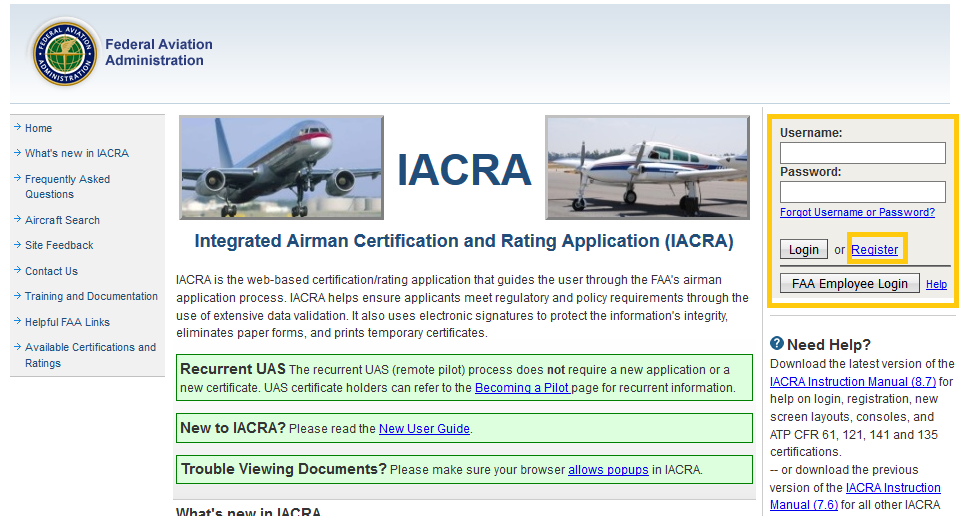
Process for First-Time pilots
Step 1: Obtain an FAA Tracking Number (FTN) by creating an Integrated Airman Certification and Rating Application (IACRA) profile before registering for a knowledge test.
Step 2: Schedule an appointment with an FAA-approved Knowledge Testing Center. Be sure to bring a government-issued photo ID to your test.
Step 3: Pass the initial aeronautical knowledge test: “Unmanned Aircraft General – Small (UAG)”.
Step 4: Complete FAA Form 8710-13 for a remote pilot certificate (FAA Airman Certificate and/or Rating Application) using the electronic FAA Integrated Airman Certificate and/or Rating Application System (IACRA)*
- Login with username and password
- Click on “Start New Application” and 1) Application Type “Pilot”, 2) Certifications “Remote Pilot”, 3) Other Path Information, 4) Start Application
- Follow application prompts
- When prompted, enter the 17-digit Knowledge Test Exam ID (Note: it may take up to 48 hours from the test date for the knowledge test to appear in IACRA)
- Sign the application electronically and submit it for processing.
Process for Existing Part 61 Certificate Holders
Step 1: Create an account, or log into your existing account, on the FAA Safety Team (FAASTeam) website.
Step 2: Complete the Part 107 Small UAS Initial (ALC-451) online training course.
Step 3: Create an account, or log into your existing account, in IACRA.
Step 4: Complete Form 8710-13 for a remote pilot certificate (FAA Airman Certificate and/or Rating Application) in IACRA.
- Login with username and password
- Click on “Start New Application” and 1) Application Type “Pilot”, 2) Certifications “Remote Pilot”, 3) Other Path Information, 4) Start Application
- Follow application prompts
- Sign the application electronically and submit it for processing.
Step 5: Make an appointment with one of the following entities to validate your identity. Bring your completed Form 8710-13, proof of your current flight review, photo ID, and your online course completion certificate.
- At an FAA Flight Standards District Office (FSDO)
- With an FAA-designated pilot examiner (DPE)
- An airman certification representative (ACR)
- An FAA-certificated flight instructor (CFI)*
Please note: * CFIs cannot issue temporary certificates. They can process applications for applicants who do not want a temporary certificate.
C: Waiting Period and Processing Time For Acquiring a Remote Pilot Certificate
After submitting the form as a first-time pilot, you will receive a confirmation email once your TSA security background check is complete. This email will contain instructions for printing a temporary remote pilot certificate from IACRA.
Typically, you’ll receive your temporary remote pilot certificate within a week.
Your permanent remote pilot certificate will be mailed once all other FAA-internal processing is complete. It will take approximately 6-10 weeks to process and send your permanent certificate.
If you hold a Part 61 certificate, you can have a representative sign your application and issue you a temporary airman certificate. You will get your permanent certificate via U.S. mail within a few weeks.
Make sure to have your Remote Pilot Certificate readily available whenever you operate your drone.
Obtaining your commercial drone pilot certificate is a significant milestone that involves navigating a formal application process with the FAA.
By diligently following the outlined steps and submitting a complete and accurate application, you can become a certified commercial drone pilot, enabling you to safely and legally operate drones for commercial purposes in full compliance with FAA regulations.
The Guidelines You Need to Follow as a Commercial Drone Pilot
Earning your part 107 is just the beginning. The onus is upon you to fly responsibly complying with local, state, and federal regulations.
Check out our Safe Drone Operations course to learn flying skills that will take you from a beginner to an expert drone pilot.
Here are the guidelines for drone operators under Part 107:
- You can fly during daylight (30 minutes before official sunrise to 30 minutes after official sunset, local time) or in twilight if your drone has anti-collision lighting.
- Minimum weather visibility is three miles from your control station.
- Do not operate your drone from a moving vehicle unless you are flying your drone over a sparsely populated area and it does not involve the transportation of property for compensation or hire.
- Always avoid manned aircraft.
- Never operate your drone carelessly or recklessly.
- Keep your drone within sight. If you use First Person View or similar technology, you must have a visual observer and always keep your drone within unaided sight (for example, no binoculars).
- You cannot be a pilot or visual observer for more than one drone operation at a time.
- Do not fly a drone over people unless they are directly participating in the operation.
- Do not operate your drone from a moving aircraft.
Related Reading: Check out “New Drone Laws in the USA” to get more information on the regulations for unmanned aerial vehicles (UAVs)
NOTE: If you are a recreational drone pilot, you need to pass The Recreational UAS Safety Test (TRUST).
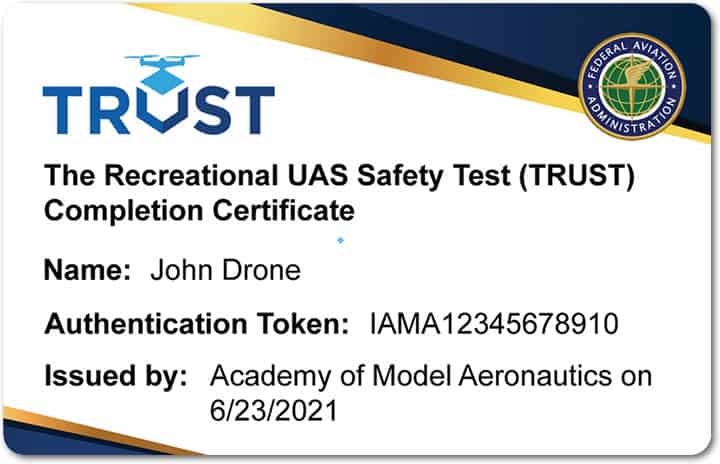
Essential Considerations for Commercial Drone Pilots
As a commercial drone operator, it’s crucial to be aware of the special considerations that come with the territory. From insurance requirements to airspace restrictions, these factors can significantly impact your operations.
Let’s take a closer look at a few of these considerations to ensure safe and compliant drone operations.
1. Part 107 Waivers and exemptions for specific operations:
Note: You do not need a waiver to fly a drone following Part 107 rules. You do need a waiver when you want to operate a drone contrary to the rules in Part 107 under the waivable operations listed below.
| To | You need a waiver from |
| Fly a small UAS from a moving aircraft or a vehicle in populated areas | § 107.25 – Operation from a Moving Vehicle or Aircraft |
| Fly a small UAS at night without anti-collision lighting | § 107.29(a)(2) – Operation at night |
| Fly a small UAS during periods of civil twilight without anti-collision lighting | § 107.29(b) – Operation at Night |
| Fly a small UAS beyond your ability to clearly determine the position, altitude, attitude, and movement of the sUA, with unaided vision. | § 107.31 – Visual Line of Sight Aircraft Operation |
| Use a visual observer without following all visual observer requirements | § 107.33 – Visual Observer |
| Fly multiple small UAS with only one remote pilot | § 107.35 – Operation of Multiple Small UAS |
| Fly over a person with a small UAS which does not meet conditions of operational categories 1, 2, 3, or 4 | § 107.39 – Operation over human beings. |
Fly a small UAS:
|
§ 107.51 – Operating Limitations for Small Unmanned Aircraft |
| Fly over moving vehicles with a small UAS which does not meet conditions of operational categories 1, 2, 3, or 4 | § 107.145 – Operations Over Moving Vehicles |
Request a waiver for only what you need to fly your mission. Additionally, you can review the criteria to evaluate waiver applications: Part 107 Waiver – Section Specific Evaluation Information (PDF)
2. Airspace Authorizations
Operations in Class G airspace are allowed without air traffic control (ATC) permission. Class B, C, D, and E airspace operations need ATC authorization.
The Low Altitude Authorization and Notification Capability (LAANC) uses desktop and mobile apps designed to support the volume of drone operations with almost real-time airspace authorizations. It is now live at more than 530 FAA ATC facilities covering over 726 airports throughout the country. any authorizations are granted within seconds of being submitted.
Currently, LAANC only applies to FAA ATC facilities and does not yet include contract or Department of Defense ATC facilities.
3. FAADroneZone
FAADroneZone is a one-stop, online shop for drone registration and for requesting waivers or airspace authorizations (where LAANC is not available).

4. B4UFLY App
The B4UFLY app provides situational awareness to recreational flyers and other drone users, including interactive maps that show where recreational flyers can and cannot fly.
The B4UFLY app is available for free download on the App Store for iOS and the Google Play Store for Android. In addition to the mobile app, B4UFLY also offers a desktop version for preflight planning and research.
Check out this video to address any concerns and get clarification about the FAA Part 107 certification:
Frequently Asked Questions
1. Do you need a drone pilot license to fly a drone in the USA?
To operate your drone under the FAA’s Small UAS Rule (Part 107), you must obtain a Remote Pilot Certificate from the FAA. If you intend to fly for recreational purposes, you must pass The Recreational UAS Safety Test (TRUST).
2. How do I get FAA approval for drones?
To fly under Part 107 rules, there are 3 main steps.
Step 1: Learn the Rules
Step 2: Become an FAA-Certified Drone Pilot by Passing the Knowledge Test
Step 3: Register your Drone with the FAA
3. What is the validity of a remote pilot certificate?
The Remote Pilot Certificate is valid for two years. After that, you’ll need to complete a recurrent training course and pass a knowledge test to renew your certificate.
4. What should I study for the Part 107 aeronautical knowledge test?
Study materials are available online. Applicants can review the Airman Certification Standards (ACS) for Unmanned Aircraft Systems (PDF), the Remote Pilot Study Guide (PDF), and the online sample questions (PDF) available on the FAA website.
You can also take our comprehensive Part 107 Certification course that guarantees passing your exam on the first attempt.
YOU MAY ALSO LIKE...
Add Your Comment
You may be also interesting in...
Part 107 Drone License
all your part 107 drone license questions answered... here you will find the most comprehensive collection of part 107 material, study guides, practices tests,...
Read MoreSome of our most popular topics...
Be sure and check out our page with guides, posts and other helpful information.
Learn MoreTop 10 Blogs
- 1. Autel Evo 2 vs DJI Mavic 3 – Which Drone Should You Buy in 2020?
- 2. Part 107 License FAQ | Your Drone Certificate Questions Answered
- 3. Flying Large Drones Over 55 Pounds Using Section 333 Exemption
- 4. Drone Insurance FAQ's – How to Get the Best and Most Affordable Coverage
- 5. LAANC Apps - Using Kittyhawk and Skyward for Approval
- 6. FAADroneZone - How to Apply for a Part 107 Waiver
- 7. Little Known Facts About Part 107’s “Visual Line of Sight (VLOS)" Rule That You Might Not Be Aware Of
- 8. Should You Get Drone Jobs through Drone Base?
- 9. Flying Drones Over Streets and Moving Traffic
- 10. Best Drones for Flying in the Wind
Top 10 Podcasts
- 1. What should I know about drone insurance?
- 2. BONUS EPISODE: Michael Singer v. City of Newton (City Drone Ordinance Nullified!)
- 3. Is there a place for me in the real estate industry if I lack photography and video skills?
- 4. Is the DJI Spark a good drone?
- 5. INTERVIEW WITH ANDY LUTEN
- 6. How to market your drone business
- 7. DJI Drone Comparison | DJI Phantom 4 Pro, Inspire 1, Inspire 2
- 8. Can I fly my drone over people if I have their consent?
- 9. Drone Photography Pricing for land-only drone jobs
- 10. Can I fly my drone over a road?

Download our No #1 Resource: Part 107 Study Guide
What's Inside this Guide?
- 2500+ pages of FAA material broken into digestible easy to read 279 pages
- Includes over 350 sample quiz & test questions(with answer keys)
